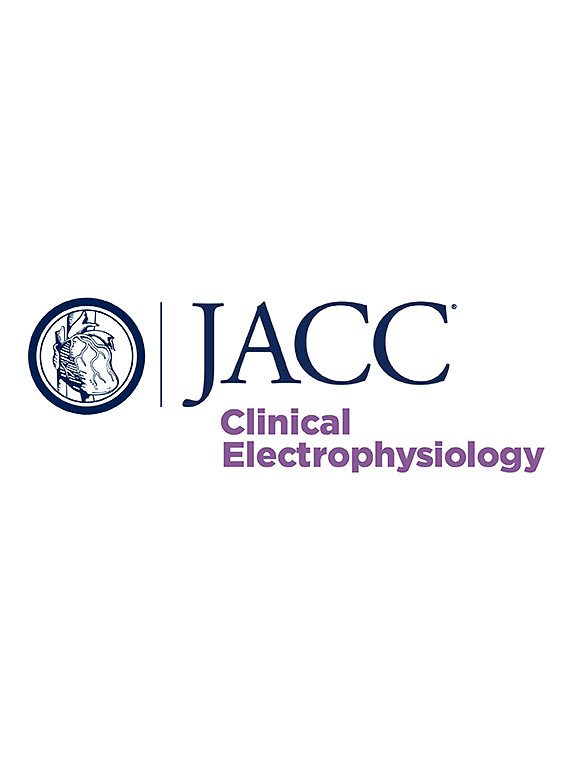接受室性心动过速消融术的耐用左室辅助装置受术者的死亡率。
IF 8
1区 医学
Q1 CARDIAC & CARDIOVASCULAR SYSTEMS
引用次数: 0
摘要
背景:左心室辅助装置(LVAD)受术者室性心动过速(VT)的发病率较高。然而,VT消融术在这一人群中的作用尚未得到充分证实:这项单中心回顾性队列研究旨在探讨 LVAD 植入术后 VT 消融对存活率的影响:这项回顾性研究调查了2011年1月至2021年1月期间在贝勒圣路加医疗中心和德克萨斯心脏研究所接受LVAD植入术的患者队列。根据 VT 发生率、VT 发病时间以及 VT 消融的发生和时间,利用 Kaplan-Meier 生存分析和 Cox 比例危险模型比较了 LVAD 接受者的全因估计死亡率:结果:在 575 名 LVAD 受者中,53% 的患者在植入后出现 VT。植入后一年内出现 VT 的患者死亡率较高(HR:1.62 [95% CI:1.15-2.27])。在这组患者中,与 VT 发生后 45 个月内只接受药物治疗的患者相比,接受导管消融治疗的患者存活率更高(HR:0.48 [95% CI:0.26-0.89])。此外,在这一人群中实施消融术后,死亡率与未发生植入后 VT 的患者一致(HR:1.18 [95% CI:0.71-1.98]):结论:植入 LVAD 后 1 年内发生 VT 与存活率降低有关。结论:植入 LVAD 1 年内发生 VT 与存活率降低有关,但与单纯药物治疗相比,在这一人群中进行 VT 消融可改善存活率。在难治性 VT 患者中,导管消融术与其他无植入后 VT 的 LVAD 患者相比,生存率更高。导管消融 VT 与 LVAD 受者存活率的提高有关,但还需要进一步的前瞻性随机研究来比较 LVAD 受者的 VT 消融与医疗管理。本文章由计算机程序翻译,如有差异,请以英文原文为准。
Mortality in Recipients of Durable Left Ventricular Assist Devices Undergoing Ventricular Tachycardia Ablation
Background
Left ventricular assist device (LVAD) recipients have a higher incidence of ventricular tachycardia (VT). However, the role of VT ablation in this population is not well-established.
Objectives
This single-center retrospective cohort study sought to examine the impact of post-LVAD implant VT ablation on survival.
Methods
This retrospective study examined a cohort of patients that underwent LVAD implantation at Baylor St. Luke’s Medical Center and Texas Heart Institute between January 2011 and January 2021. All-cause estimated mortality was compared across LVAD recipients based on the incidence of VT, timing of VT onset, and the occurrence and timing of VT ablation utilizing Kaplan-Meier survival analysis and Cox proportional hazards models.
Results
Post-implant VT occurred in 53% of 575 LVAD recipients. Higher mortality was seen among patients with post-implant VT within a year of implantation (HR: 1.62 [95% CI: 1.15-2.27]). Among this cohort, patients who were treated with a catheter ablation had superior survival compared with patients treated with medical therapy alone for the 45 months following VT onset (HR: 0.48 [95% CI: 0.26-0.89]). Moreover, performance of an ablation in this population aligned mortality rates with those who did not experience post-implant VT (HR: 1.18 [95% CI: 0.71-1.98]).
Conclusions
VT occurrence within 1 year of LVAD implantation was associated with worse survival. However, performance of VT ablation in this population was correlated with improved survival compared with medical management alone. Among patients with refractory VT, catheter ablation aligned survival with other LVAD participants without post-implant VT. Catheter ablation of VT is associated with improved survival in LVAD recipients, but further prospective randomized studies are needed to compare VT ablation to medical management in LVAD recipients.
求助全文
通过发布文献求助,成功后即可免费获取论文全文。
去求助
来源期刊

JACC. Clinical electrophysiology
CARDIAC & CARDIOVASCULAR SYSTEMS-
CiteScore
10.30
自引率
5.70%
发文量
250
期刊介绍:
JACC: Clinical Electrophysiology is one of a family of specialist journals launched by the renowned Journal of the American College of Cardiology (JACC). It encompasses all aspects of the epidemiology, pathogenesis, diagnosis and treatment of cardiac arrhythmias. Submissions of original research and state-of-the-art reviews from cardiology, cardiovascular surgery, neurology, outcomes research, and related fields are encouraged. Experimental and preclinical work that directly relates to diagnostic or therapeutic interventions are also encouraged. In general, case reports will not be considered for publication.
 求助内容:
求助内容: 应助结果提醒方式:
应助结果提醒方式:


